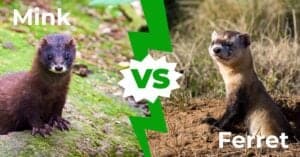An excellent swimmer and a solitary predator, the mink is an adorable creature living in North America and Europe. Did you know that minks are among the few animals that can carry the Covid-19 virus? Or that people often try to keep them in captivity, which means great suffering for them because of their wild temperament?
Another incredible mink fact is that they can eat prey almost as large as themselves! But how do they digest it, and how do they excrete the waste? Keep on reading, and you’ll find all the answers!
What are minks?
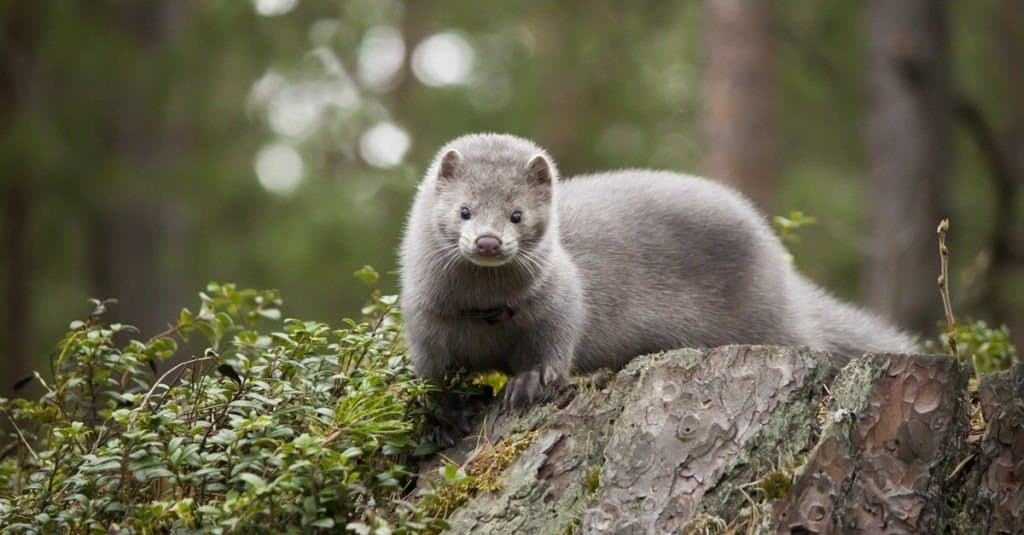
Minks are members of the
Mustelidaefamily.
©Aleksandra Saveljeva/Shutterstock.com
Minks are members of the Mustelidae family, in the Neogale and Mustela genera. Otters, weasels, and ferrets are also members of this family.
Minks are classified into two species – the European mink, Mustela lutreola, and the American mink, Neovison vison. The latter species is much more adaptable than the former. They are also larger than European mink, but some American mink lack the markings that are used to distinguish European minks – white markings on the chin and lips and some white spots on the chest, throat, and stomach.
In North America, the American mink is common and can be found all over Canada and the United States, except for the hot Southwest and the cold northern regions. On the other hand, the European mink is rare, and only a few individuals live in Western and Central Europe. The sea mink is an extinct species that disappeared in the early 20th century.
People often mistake minks for weasels due to their similar appearance. Minks have a long body, short legs, and webbed feet. Their noses are pointed, while their ears are round. Minks are dark brown or black. White or tan individuals can be spotted in the wild.
The American mink measures 18-28 inches long (including the 6 to 10 inches tail) and weighs 1.5–3.5 pounds. The European mink measures 12–15 inches long and weighs 1–1.6 pounds.
Minks live on land and in water, where they can swim to depths of up to 100 feet. They are solitary animals, living and hunting alone, and are often aggressive if other minks try to invade their territories.
What do minks eat, and what eats them?
Minks are carnivorous animals. They usually hunt around freshwater shores and are capable of hunting and eating animals almost as large as themselves! Isn’t it impressive?! It indicates that their hunting skills and tactics are highly developed.
Here’s a list of what minks eat:
Minks are often prey to bobcats, foxes, coyotes, and wolves.
What does mink poop look like?
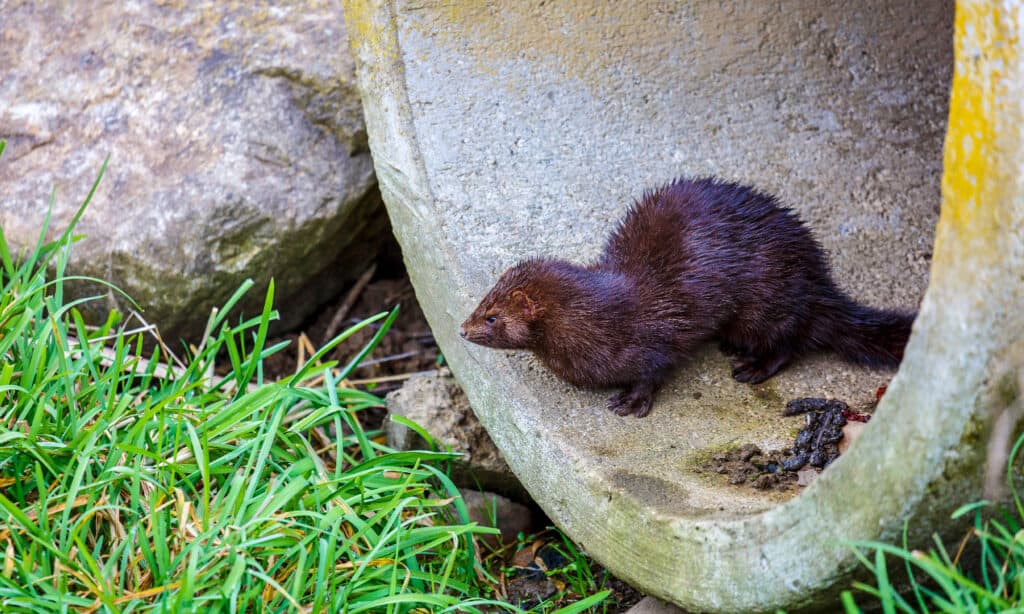
Healthy mink droppings are long and twisted.
©LFRabanedo/Shutterstock.com
The size, form, texture, and color of mink poop highly depend on the animal’s diet. It usually measures 0.39 inches in diameter and 1.9 – 3.1 inches in length. Healthy mink droppings are long and twisted. The ends of the waste are tapered. The scat can be black or brown, sometimes mixed with dark green. It may contain feathers, bones, and fur. A mink’s poop has a very unpleasant smell that reminds of burnt rubber or, even worse, bad meat.
Mink digestive system
A study called “Comparative Nutrient Digestibility in Dogs, Blue Foxes, Mink, and Rats” confirms that minks have a highly efficient digestive system, just like other carnivores. Because of their diet, carnivores’ bodies have adapted to what they eat, and their food is rapidly and easily digested. On the other hand, omnivores’ and herbivores’ food undergoes a much more complicated digestive process, as they require fermentation.
A carnivore’s gastric stomach and short (compared to other animals’) intestine greatly help speed up the process. However, researchers discovered that minks have a lower nutrient digestibility compared to dogs. The study also showed that minks don’t have a cecum. Besides this, their colon also didn’t register much bacterial activity.
Another study revealed that a mink’s gastrointestinal tract is four times the length of its body. Moreover, it takes the food approximately four to five hours to transit the whole tract.
Mink poop vs. badger poop

Badger poop is usually a bit longer and thicker than mink poop.
©iStock.com/Roel_Meijer
Badger poop is usually a bit longer and thicker than mink poop, measuring approximately 4 inches in length and having a sausage-like form. Compared to mink poop, which is often twisted, badger poop rarely has a significant bent. Moreover, a typical badger scat is brown or black, but it can have shades of purple. It has a sweet smell.
Mink poop vs. rabbit poop
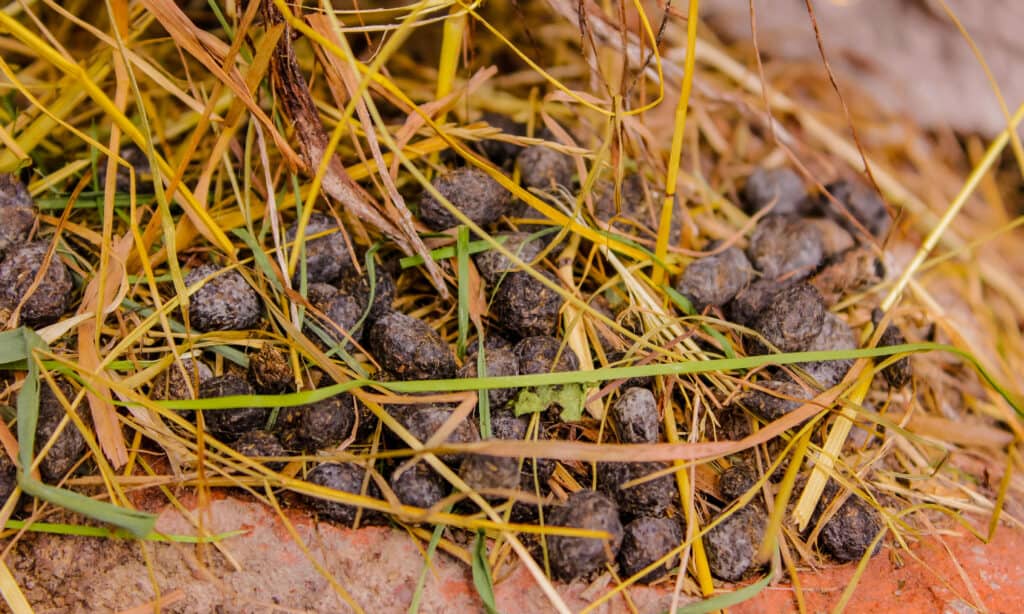
Rabbit poop can be brown, greenish, or yellowish.
©Daria Soroka/Shutterstock.com
Distinguishing rabbit poop from mink poop is easy, as they are completely different droppings. Rabbit poop can be brown, greenish, or yellowish. These animals poop in tiny spherical balls. They are firm and usually full of grass. On average, they measure 0.39 inches in diameter. Rabbit pellets have a sweet smell.
Mink poop vs. hedgehog poop

Hedgehogs poop in long, cylindrical droppings.
©iStock.com/Andrey Maximenko
Hedgehogs poop in long, cylindrical droppings. They measure approximately 2 inches long. Just like rabbit and badger poop, hedgehog scat has a sweet smell. It’s usually black, has blueish shades, and can contain worms or parts of insects.
Mink poop vs. squirrel poop
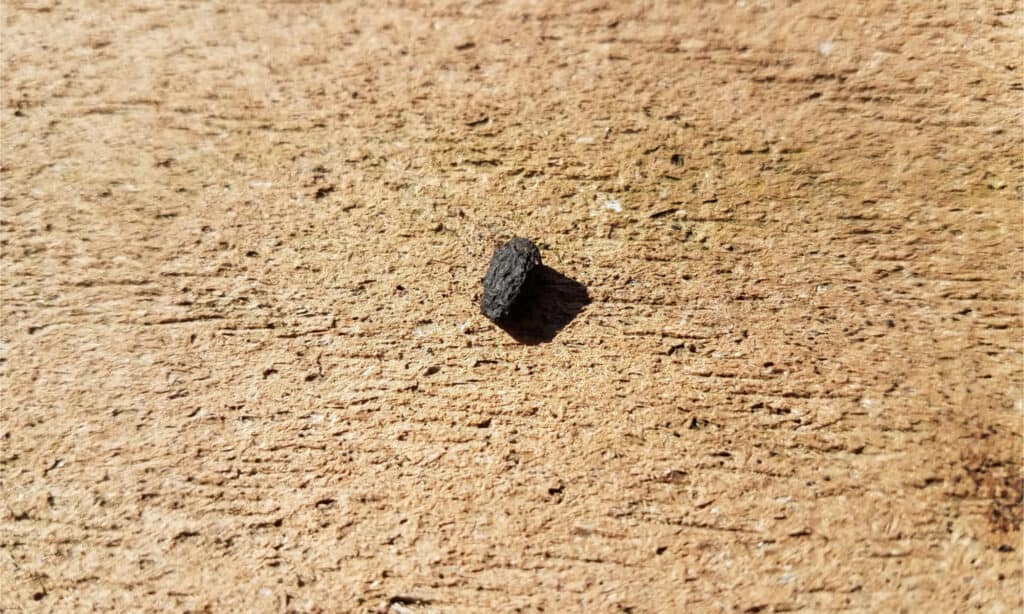
Squirrel droppings are black or dark gray.
©stockphotofan1/Shutterstock.com
Squirrel poop is much smaller than mink poop, measuring 0.2-0.3 inches long. Squirrel droppings are black or dark gray. They also have a sweet smell.
Mink poop vs. rat poop
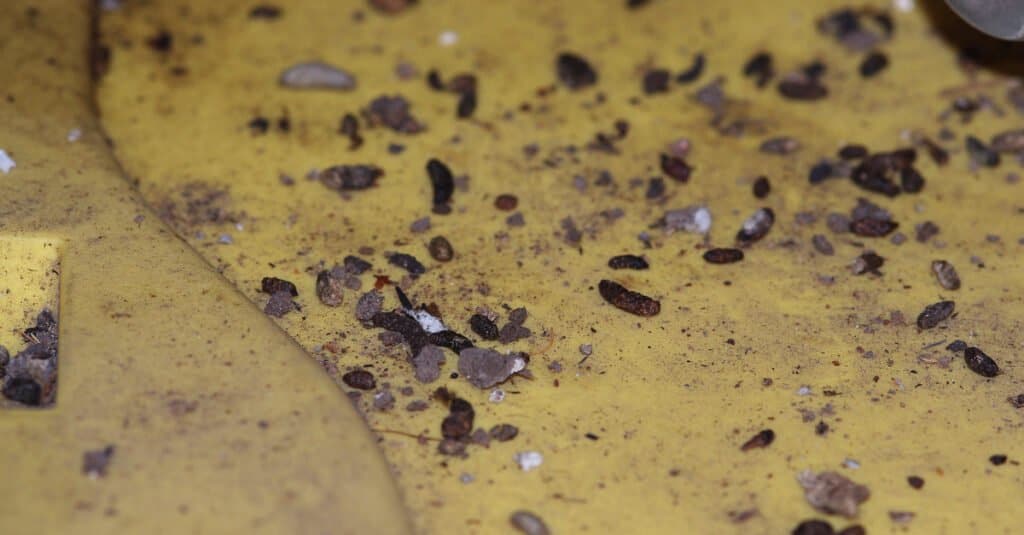
Rats poop in large, oval droppings.
©Photo – TMD/Shutterstock.com
Rats poop in large, oval droppings. They are usually soft and have a dark color. One end of a rat’s poop may be flattened, and the other pointy. It has a very unpleasant smell and can reach 0.66 inches long and 0.2 inches wide.
Mink poop vs. otter poop

Otter spraints are often slimy, greenish, black, or gray excrements.
©iStock.com/Cloebudgie
Otter poop is called a spraint. Their droppings are similar to mink poop. Otter spraints are often slimy, greenish, black, or gray excrements. Just like mink poop, they may contain feathers, bones, and fur traces. One thing that can tell the two apart is their smell. While mink poop has an unpleasant burnt rubber-like smell, fresh otter poop smells like jasmine tea. Some people state otter spraints smell like laurel flowers.
Up Next:
The photo featured at the top of this post is © Aleksandra Saveljeva/Shutterstock.com
Thank you for reading! Have some feedback for us? Contact the AZ Animals editorial team.




